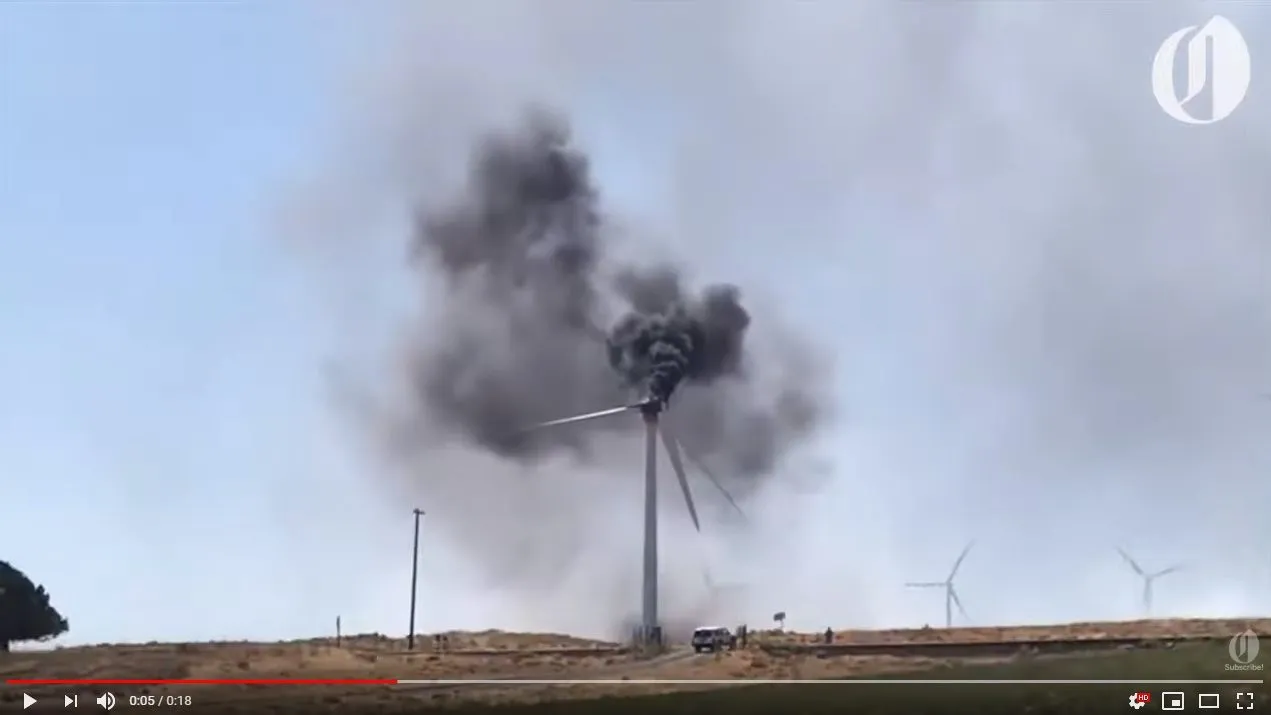Too many bad ideas are allowed to fester unchallenged because, as George Orwell wrote, “the average human being never bothers to examine catchwords”.
We see the truth of Orwell’s observation all around us these days. Whether it’s the media throwing around slurs like ‘far right’, or activists shouting ‘Nazi’, ‘transphobic’, ‘Islamophobic’, and, yes, the right branding everything they don’t like ‘liberal’. What these amount to are what I call ‘shut-up’ words. They don’t advance dialogue or understanding: their sole purpose is to tell people to shut up.
What’s worst, though, is when people who should know better take on unexamined catchwords as if they were unchallenged facts. Doing so only concedes vital ground to the mendacious activists.
Take, for instance, ‘renewables’. This word is used without comment, but what does it even mean? When you examine it closely, in fact, the whole dichotomy of ‘renewables’ and ‘non-renewables’ falls to pieces.
The UN defines Renewable energy as “energy derived from natural sources that are replenished at a higher rate than they are consumed.” Whether something is renewable or not, then is dependent upon the relationship between replenishment and consumption.
The founding campaign of modern environmentalism, whaling, is a case in point. Whale oil and meat are a ‘renewable resource’: you can always breed more whales, after all. But when consumption outstripped renewability, as it did by the early 20th century, whales suddenly became a very non-renewable commodity.
Ditto, trees. ‘Renewable’ forests provided the vital resources for shipbuilding for centuries, until consumption grew much faster than trees did. Today, ‘biomass’, another unexamined catchword that really means ‘burning trees’, is classified as a ‘renewable’ resource. Eventually, though, biomass will likely hit the same critical point as shipbuilding did.
Biomass also calls into question the unexamined assumption of ‘renewables’ that they somehow don’t contribute to carbon emissions. Yet, burning trees very obviously releases vast amounts of carbon into the atmosphere.
Such relationships can be observed with present renewable energy sources as well. If you overbuild or over-dispatch generation relative to some geothermal resources, they can be exhausted. Similarly, the use of hydro resources can be depleted. Many areas have “water wars” where various constituencies fight over how water resources are used by recreational, agricultural, aquaculture, navigation and energy production. Past hydro energy usage patterns are not sustainable in many regions.
Tasmania got a brutal lesson in the ‘renewability’ of hydro power in 2016. A combination of a corporatised generator making windfall profits from carbon credits by exporting hydro power to the Australian mainland, and a drier-than-expected winter, brought the state to the brink of energy and environmental catastrophe. Tasmania’s system of lakes and rivers were almost drained to exhaustion and emergency gas generators became necessary.
Coal, natural gas, and nuclear energy, are classed as ‘non-renewable’ – but, are they really?
The UN defines renewable energy as “energy derived from natural sources that are replenished at a higher rate than they are consumed.”
Nuclear waste purportedly could power the US for 100 years. Economically assessable uranium might last 200 years. With breeder reactors we may be able to generate with nuclear power for billions of years. Recognizing all the resources needed to produce electrical energy, based on our current technological abilities it looks like we could generate far more energy for longer time periods with nuclear resources before facing significant resource constraints than we might with renewable resources such as wind and solar.
So, nuclear is in practice probably inexhaustible. So is coal.
The estimates for coal availability span 50 to 500 years or more […] Common estimates of natural gas availability fall between 60 and 120 years. This is far more natural gas than was assumed available before the advent of horizontal fracking.
Who would want to place bets on what energy technology will be available in 100 years? Bear in mind that, 100 years ago, the concept of nuclear energy was completely unknown. With centuries of coal, oil and gas supplies, it seems unlikely that they’ll ever be exhausted. Fossil and nuclear fuels are all derived from natural sources.
So, by the UN’s definition, they’re all ‘renewable’.
Wind, solar, and hydro, all depend on resources that are every bit as limited as coal or oil: iron, copper, oil and rare earth metals.
The terms ‘renewable’ and ‘non-renewable’ are meaningless when subjected to even the lightest scrutiny. So why do we persist in using them?
Because we’ve been hoodwinked by unexamined catchphrases into buying into an argument that’s deliberately weighted to favour a particular ideology. That is the ideology that coal, oil, gas and nuclear must be immediately phased out.
Instead of speaking of renewables, let’s talk about how clean resources are, how green they might be, how sustainable they might be, and how well they work for supporting the needs of consumers and the power system.
Climate Etc.
On all of those, wind and solar are highly questionable. Start with the fact that vast swathes of old-growth forest in Australia are being bulldozed to make way for wind and solar projects and the massive new transmission lines needed to service them. Or the environmental havoc wreaked by rare earth mining and refining. Or the brutal toll on endangered raptors in places like Tasmania.
Calling them ‘renewables’ glosses over all of that, because ‘renewables’ has been engineered to carry a weight of assumptions in its favour, just as ‘kindness’ was deliberately weaponised by the Ardern government.
For a start, begin calling wind and solar what they really are: weather-dependent energy.
Once we do that, the ‘renewables’ jig starts to fall apart.









